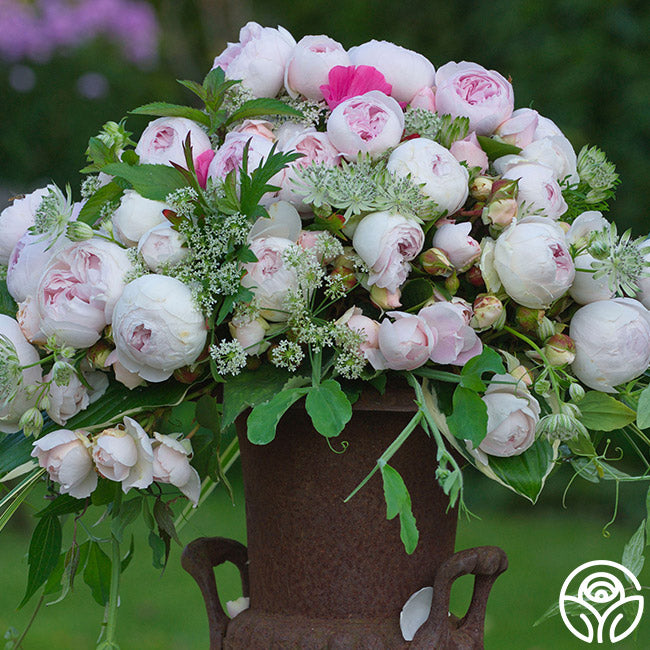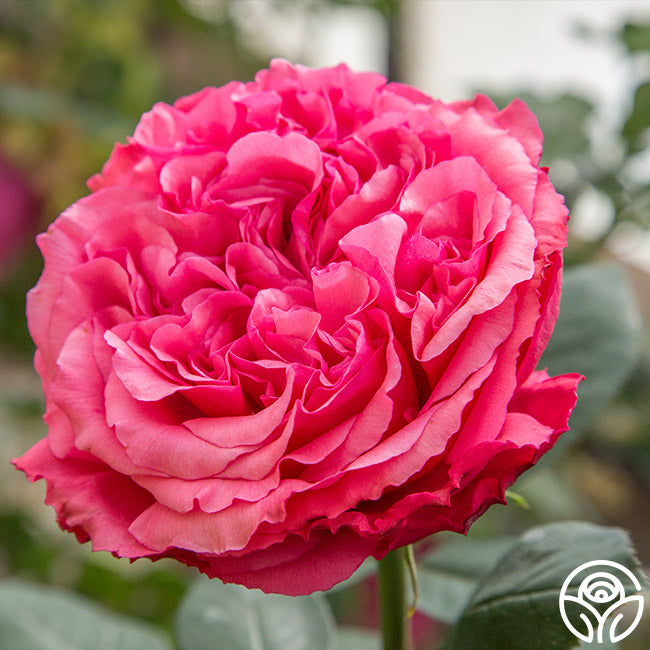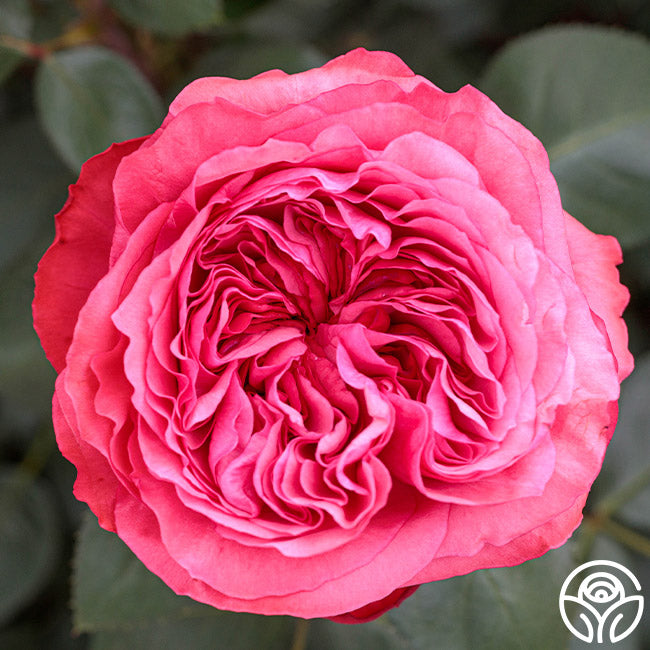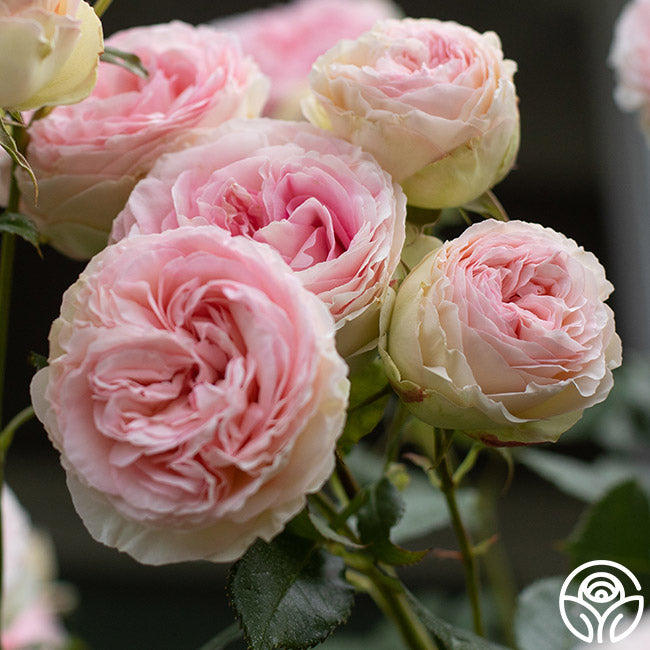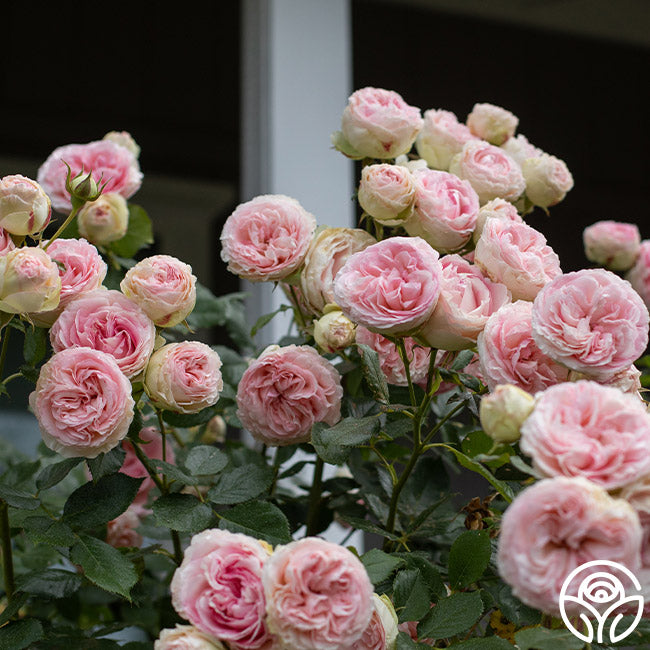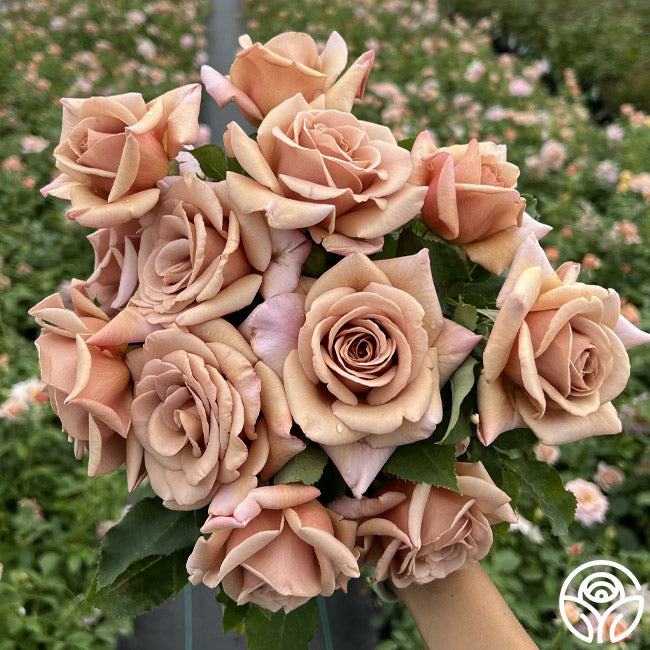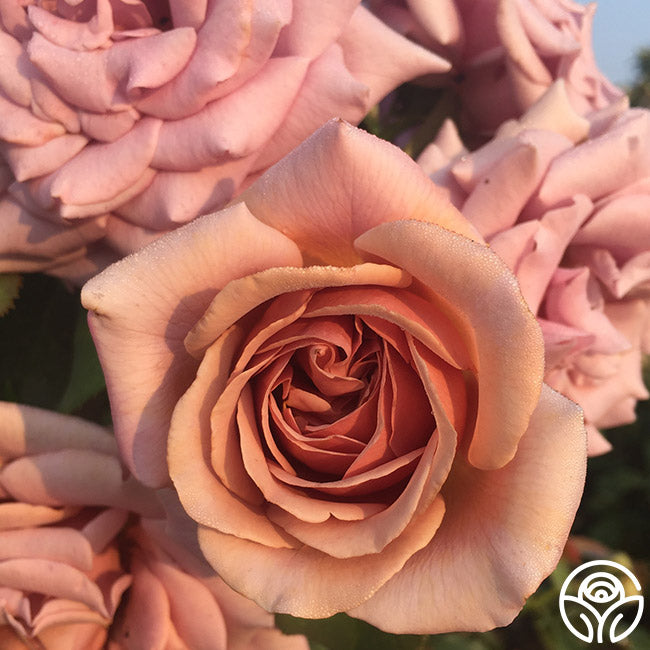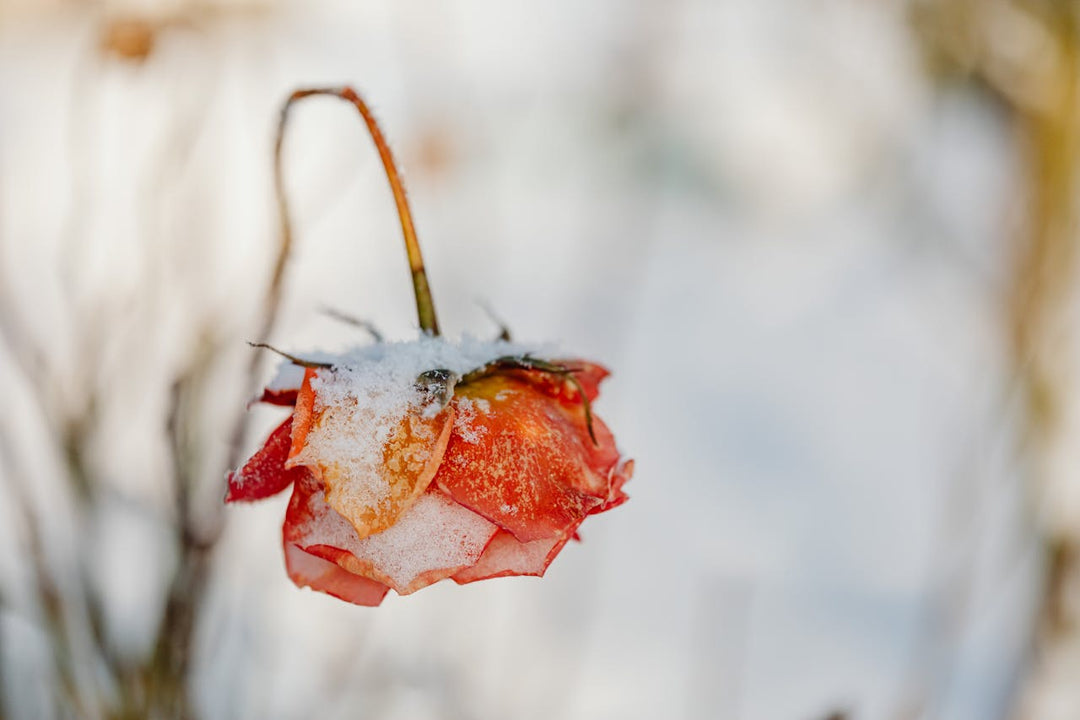Find Rose Companions
If you thought roses had to be relegated to a bed by themselves, think again. These flowering shrubs make great companion plants. By adopting an informal approach to design, you open the door to limitless creative options. There are benefits to playing garden matchmaker. Here are eight great reasons to find your perfect pairing.
- Extend the season with non-stop color by combining annuals, perennials, grasses and even other shrubs.
- Perk up a blah border by adding contrast and texture with spiky blooms (foxglove or grasses), bold, coarse leaves (brunnera), or frothy inflorescences (baby’s breath).
- Attract beneficial insects, birds and bees with a diverse palette. Did you know that hummingbirds gladly eat the aphids off of your rose bushes as they cruise for nectar?
- Create the ultimate cutting garden in your own backyard. Opt for long-lived, bouquet must-haves.
- Add structure with evergreen shrubs such as boxwood, senecio, sweet box or holly. Even herbs like sage, artemesia, rosemary and lavender help to shape a space.
- Exude charm and romance by under-planting with rambling vines like clematis, or by allowing your favorite rambling rose to clamber up a tree.
- Get the blues (the one color roses don’t offer) by planting sky-hued beauties like delphinium, veronica, iris and bluebeard (Caryopteris).
- Go organic with help from popular herbs. Pungent and potent, good old garlic, geranium, and mint send pests packing.
Rose Companion Planting Guide
- For a harmonious union, choose well-behaved plants with similar growth requirements as your rose.
- Install companions 12 to 18 inches away from roses to avoid disturbing the roots.
- Avoid plants that crowd or provide too much shade. Roses do not like to compete for water, nutrients or sunlight.
- Choose clumping-type perennials or grasses that stay contained instead of spreading beyond their boundaries.
What About Groundcovers?
At Heirloom Roses, we are often asked about groundcovers and which, if any, are suitable for planting around roses. Groundcovers are an inherently attractive idea for covering up the bare lower stems of roses, particularly hybrid teas, which tend to lose their lower leaves. However, many groundcovers are simply too aggressive to be compatible. Ground covers may also be in direct conflict with some of our most basic rose care, such as raking up leaves or deadheading, but that doesn’t mean you can’t use them if you pick the right ones. Consider your rose maintenance practices to ensure a good match. Do you regularly remove spent blooms during the summer? Some groundcovers resent being trampled on while others are tolerant.
Ground Covers We Love
- Those that take light foot traffic, such as the Steppables collection, which includes violets, sedums and strawberries.
- Prostrate, ground-huggers like woolly thyme, Corsican mint or blue star creeper.
- Tough growers such as dwarf mondo grass withstand some raking.
- Summer annuals that offer seasonal color, yet doesn’t get in the way of fall cleanup or mulching. Try alyssum, lobelia, lantana, petunias, summer snapdragon (Angelonia), million bells (Calibrachoa), verbena and pinks (Dianthus).
Companions for Pest Control
True companion planting is rooted in permaculture and vegetable gardening. Most organic growers know the secrets that marigolds, geraniums, basil, and mint hold in repelling pests, along with the aforementioned garlic (as well as chives, ornamental and edible onions). Did you know that members of the Allium family are reported to increase the perfume of roses and help prevent black spot in addition to warding off insect pests?
Ward off Pests the Natural Way
- Onions repel aphids, weevils, borers, moles
- Garlic repels aphids, thrips and helps to fight black spot and mildew. For best results, you may need to plant garlic with roses for several years.
- Chives repel many pests
- Basil repels aphids, mosquitoes, moles
- Geraniums repel Japanese beetles, aphids, and rose beetles
- Marigolds discourage harmful nematodes, repels pests, and is a trap plant for slugs
- Parsley repels rose beetles
- Mint deters ants and aphids
- Tansy deters flying insects, Japanese beetles
- Tomatoes help to protect roses from black spot
Companion Plants for Roses
Long-Blooming Perennials
Aster (Aster)
Bellflower (Campanula)
Black-Eyed Susan Blanket Flower (Gaillardia)
Catmint (Nepeta)
Cone Flower (Echinacea)
Cornflower (Centaurea)
Evening Primrose (Gaura)
Foxglove (Digitalis)
Gayfeather (Liatris)
Garden Phlox Giant Hyssop (Agastache)
Lady’s Mantle (Alchemilla)
Lavender (Lavandula)
Lilies Pincushion Flower (Scabiosa)
Pinks (Dianthus)
Red Hot Poker (Kniphofia)
Red Valerian (Centranthus)
Sage (Salvia)
Sea Thrift (Armeria)
Speedwell (Veronica)
Stonecrop (Sedum)
Tickseed (Coreopsis)
Violets (Viola)
Yarrow (Achillea)
Grasses and Spiky Foliage
Blue Oat Grass Daylily (Hemerocallis)
Fountain Grass (Pennisetum)
Iris (Japanese, Bearded)
Montbretia (Crocosmia)
New Zealand Flax Ornamental Sedges (Carex)
Silver Grass (Miscanthus)
Switchgrass (Panicum)
Vines
Arctic Beauty Kiwi
Vine Black-Eyed Susan Vine
Bleeding Heart Glorybower
Clematis
Mandevilla
Moonflower Vine
Passion Vine (short varieties)
Rose Jasmine
Sweet Peas
Variegated Porcelain Vine
Long-Lasting Cut Flowers
Baby’s Breath (Gypsophila)
Bellflower (Campanula)
Black-Eyed Susan Carnation Coneflower (Echinacea)
Coralbells (Heuchera)
Cosmos Globe Thistle (Echinops)
Goldenrod (Solidago)
Japanese Anenome Larkspur (Delphinium)
Lilac Peony (Paeonia)
Peruvian Lily (Alstroemeria)
Shasta Daisy/Mums Speedwell (Veronica)
Stock Yarrow (Achillea)
Bouquet Greens
Camellia
Eucalyptus
Evergreen Huckleberry
Ferns (numerous varieties)
Japanese Euonymus
Salal (Gaultheria)
Sweet Box (Sarcococca)
Variegated Pittosporum
Evergreen Shrubs
Buxus (Boxwood)
Camellia
Lonicera nitida
Lonicera pileata
Nandina (Heavenly Bamboo)
Ilex crenata (Japanese Holly)
Ilex x meserveae ‘Blue Boy’
Osmanthus ‘Goshiki’
Taxus (Yew)
Annuals
Alyssum
Angelonia
Heliotrope
Lantana
Lobelia
Pansies
Petunias/Million Bells
Scented Geranium
Snapdragon
Verbena
Colorful/Contrasting Foliage
Artemesia ‘Guihzo’
Artemisia ‘Silver Mound’
Black Mondo Grass
Brunnera ‘Jack Frost’
Cimicifuga ‘Brunnette’
Dicentra ‘Gold Heart’
Dusty Miller
Eupatorium ‘Chocolate’
Euphorbia ‘Purpurea’
Fancy-Leaved Geraniums
Heuchera ‘Crimson Curls’
Heuchera ‘Lime Rickey’
Hostas
Lamb’s Ears (Stachys)
Lavender Cotton (Santolina)
Lobelia ‘Queen Victoria’
Physocarpus ‘Diablo’
Russian Sage (Perovskia)
Sambucus ‘Black Beauty
Senecio greyii
Sedum ‘Cape Blanco’
Sedum makinoi ‘Ogon’
Sedum ‘Vera Jameson’
Smokebush (Cotinus)
Spiraea ‘Goldmound’
Attract Hummingbirds
Beardtongue (Penstemon)
Bee Balm (Monarda)
Bleeding Heart (Dicentra)
Bugleweed (Ajuga reptans)
Butterfly Bush (Buddleia)
Cardinal Flower (Lobelia)
Columbine (Aquilegia)
Flowering Currant (Ribes)
Foxglove (Digitalis)
Fuschia (annual and hardy)
Hollyhock (Alcea)
Honeysuckle (Lonicera)
Larkspur (Delphinium)
Lupine (Lupinus)
Montbretia (Crocosmia)
Rhododendron/Azalea Rose of Sharon (Hibiscus)
Rosemary (Rosmarinus)
Sage (Salvia)
Salmonberry (Rubus)
Trumpet Vine (Campsis)
Weigela (Weigela)




